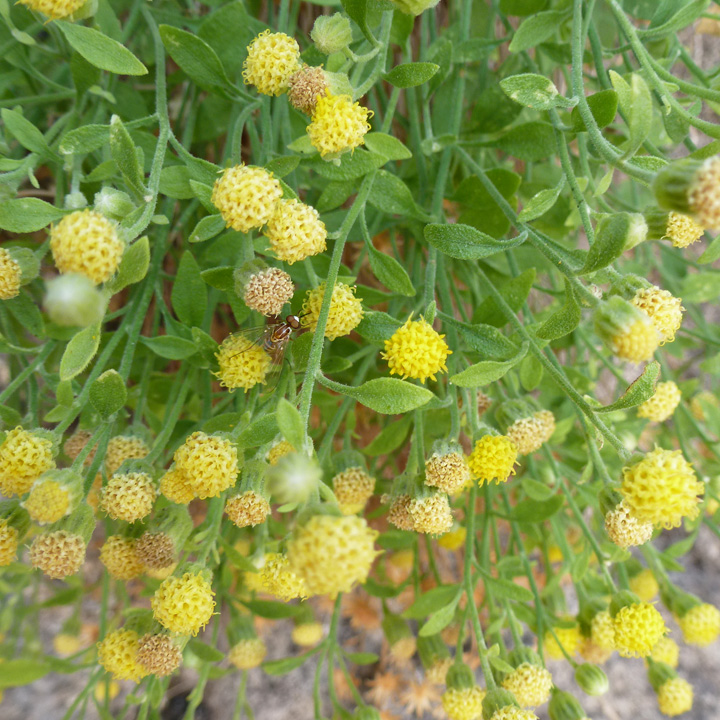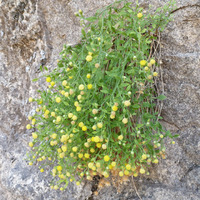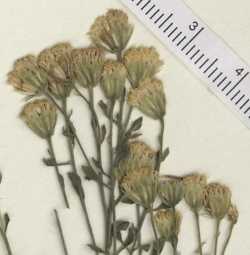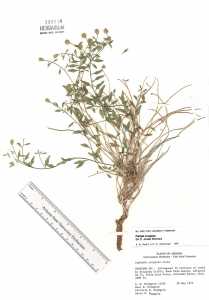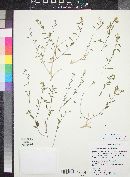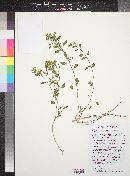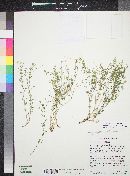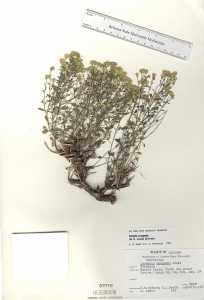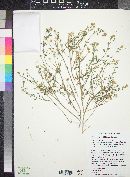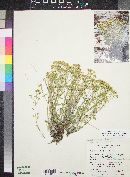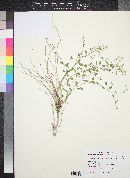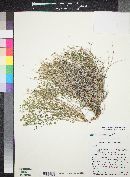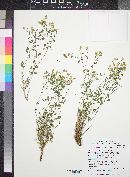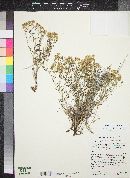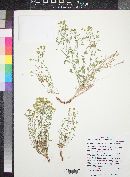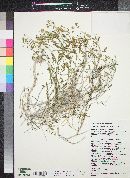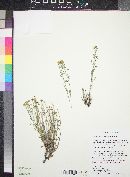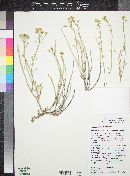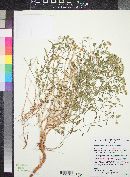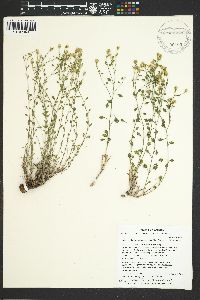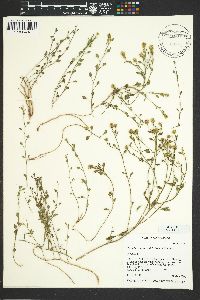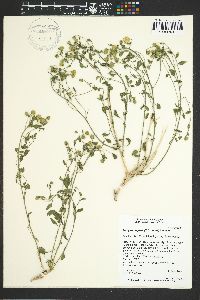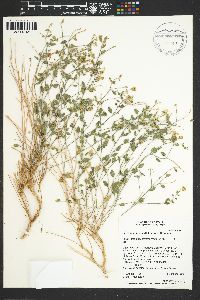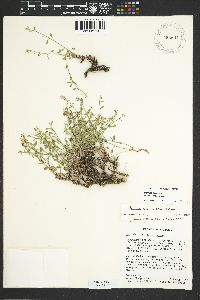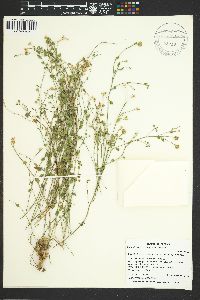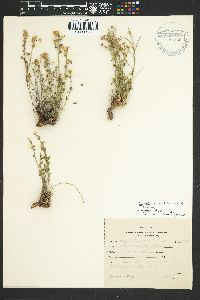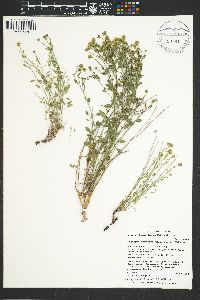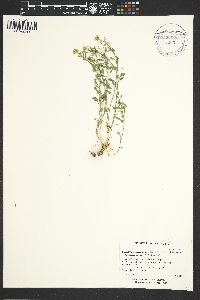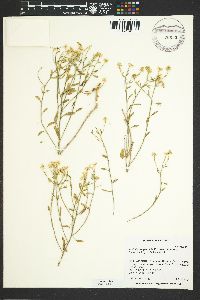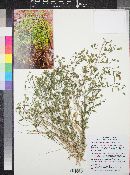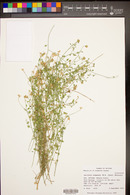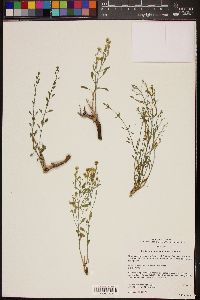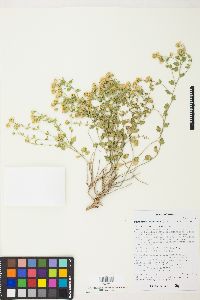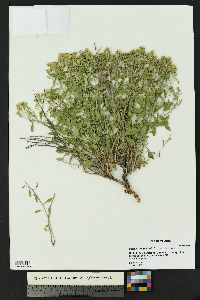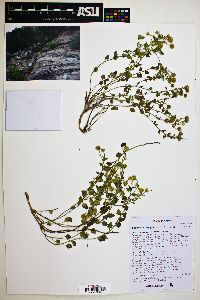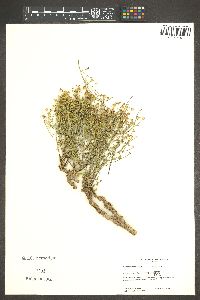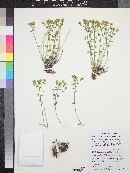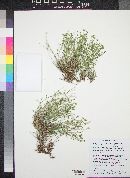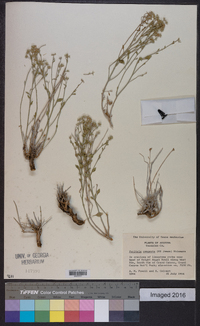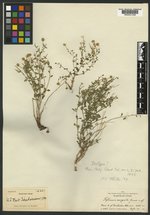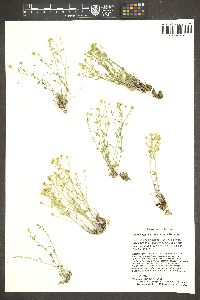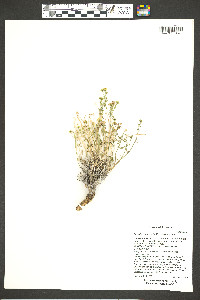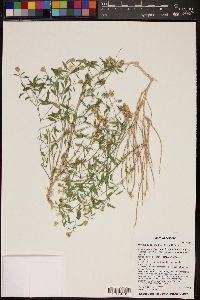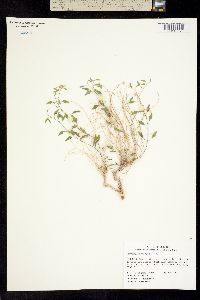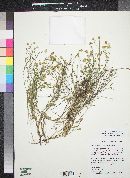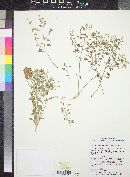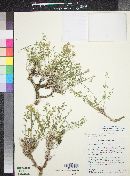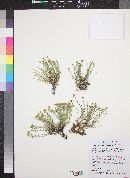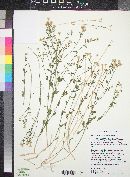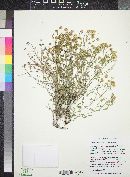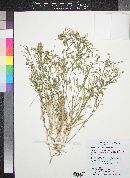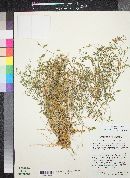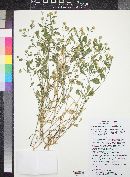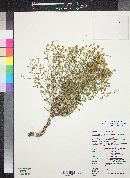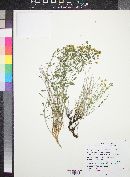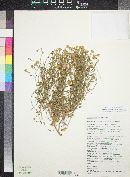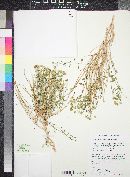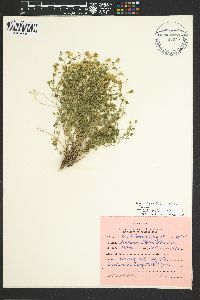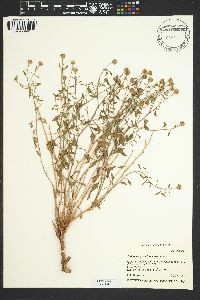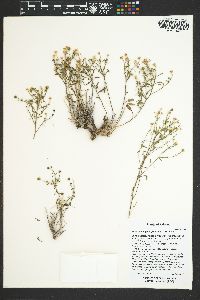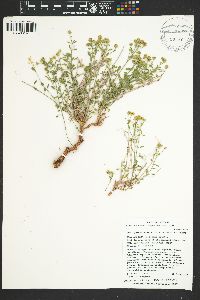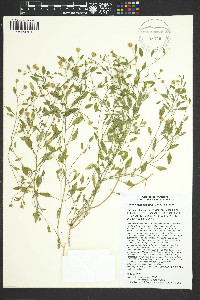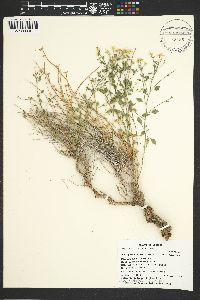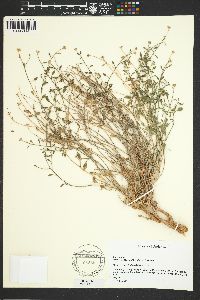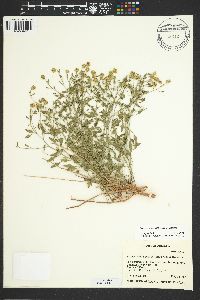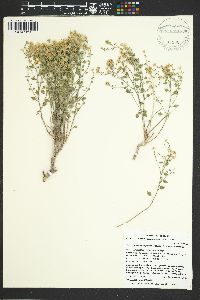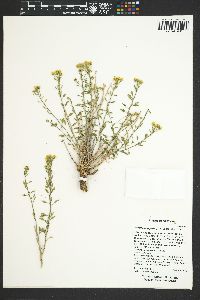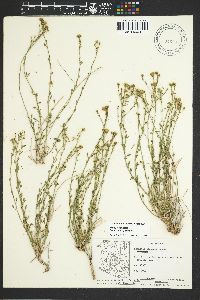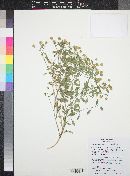Perityle congesta
|
|
|
|
Family: Asteraceae
Grand Canyon Rockdaisy, more...compact rockdaisy, compacted rockdaisy
[Laphamia congesta M.E. Jones] |
Perennials or subshrubs, 10-30(-45) cm (densely clumped, stems spreading or pendent); hirtellous. Leaves: petioles 2.5-10(-15) mm (shorter than blades); blades elliptic, lanceolate, or ovate, 5-17(-20) × 4-8(-10) mm, (bases cuneate) margins usually entire or with 2(-6) teeth. Heads borne singly or (2-8) in corymbiform arrays, 5-6(-6.5) × 3.5-4.5(-5) mm. Peduncles 3-17 mm. Involucres campanulate. Phyllaries 12-16, narrowly lanceolate, oblong-lanceolate, or lanceolate, 3.2-4.5 × 0.8-1.4 mm. Ray florets 0. Disc florets 30-40; corollas yellow, tubes 0.8-1 mm, throats tubular to subfunnelform, 1.2-1.5 mm, lobes 0.3-0.5 mm. Cypselae narrowly oblanceolate, (2-)2.5-3 mm,margins thin-calloused, short-hairy; pappi of 1-2 subequal or unequal bristles 2-2.7 mm. 2n = 32. Flowering spring-fall. Crevices of limestone cliffs and bluffs; of conservation concern; 900-2700 m; Ariz. The leaf blades of Perityle congesta usually have a tooth on each margin, cuneate bases, and unobtrusive veins abaxially; those of P. tenella usually have serrate margins, truncate bases, and raised veins abaxially. Perityle congesta is found on both rims and extending into the Grand Canyon and northward almost to the Utah border. Available specimens suggest that P. congesta and P. tenella intergrade where their ranges overlap in northwestern Arizona on the Colorado Plateau. Specimens from the Colorado Plateau have intermediate leaf shapes and induments.
Duration: Perennial Nativity: Native Lifeform: Subshrub General: Perennial, 10-30 cm tall; stems numerous, spreading to drooping, slender, glandular-scabrous to scabrous- puberulent; base of plant woody; taprooted. Leaves: Mostly cauline, alternate, linear, elliptic, lanceolate, or ovate, 0.3-2 cm long, 0.4-1 cm wide, glandular and scabrous-puberulent, margins entire or irregularly few- toothed; petiole 2.5-10 mm long, usually equaling to shorter than the blade. Flowers: Heads 3-30 or more, in compact corymb-like arrays; involucre top-shaped to campanulate, 4.5-10 mm long, 4-10 mm wide; phyllaries 16-24 in one series, puberulent or glandular; disk flowers only, 30-70, 3.5-10 mm long, yellow; flowers July-October. Fruits: Achene, narrowly oblanceolate, 2.5-3 mm long, short- hairy; pappus of 1-2 unequal or nearly equal bristles with minute upward-pointing barbs. Ecology: Rock crevices, dry rocky habitats, limestone bluffs; 800- 2400 m (2500-8000 ft); Coconino, Mohave, and Yavapai counties; southwestern U.S. Notes: Perityle gracilis (three-lobed rock daisy) [=L. gracilis] is similar to P. congesta, but its leaves are usually irregularly 3-lobed, with the central lobe usually the largest. It typically occurs in rock crevices and limestone outcrops at 1100-2100 m (3500-7000 ft). Perityle ciliata (fringed rock daisy) is a subshrub, 5-25 cm tall; stems numerous, branched; herbage is sparsely to densely puberulent, glandular; leaves are mostly opposite, deltate-ovate to ovate-rhombic, 0.6-2.3 cm long, 0.5-2.4 cm wide, gland-dotted, margins entire, serrate, or crenate, sometimes shallowly lobed; heads are solitary or several; involucre is campanulate, 4-5 mm long and about as wide; phyllaries are 13-20, mostly in 1 series, tomentose or puberulent; ray flowers are 6-10, 3- 7 mm long, white, sometimes pink tinged; disk flowers are 30-40, 2.3-2.8 mm long, yellow; achenes are linear-oblong to oblanceolate and strongly compressed, margins prominently thickened and ciliate; pappus is of 2 minutely barbed bristles. It occurs along rocky slopes and in rock crevices. Perityle congesta is a species of conservation concern in Arizona. Synonyms: Laphamia congesta M.E. Jones Editor: Springer et al. 2008 |

